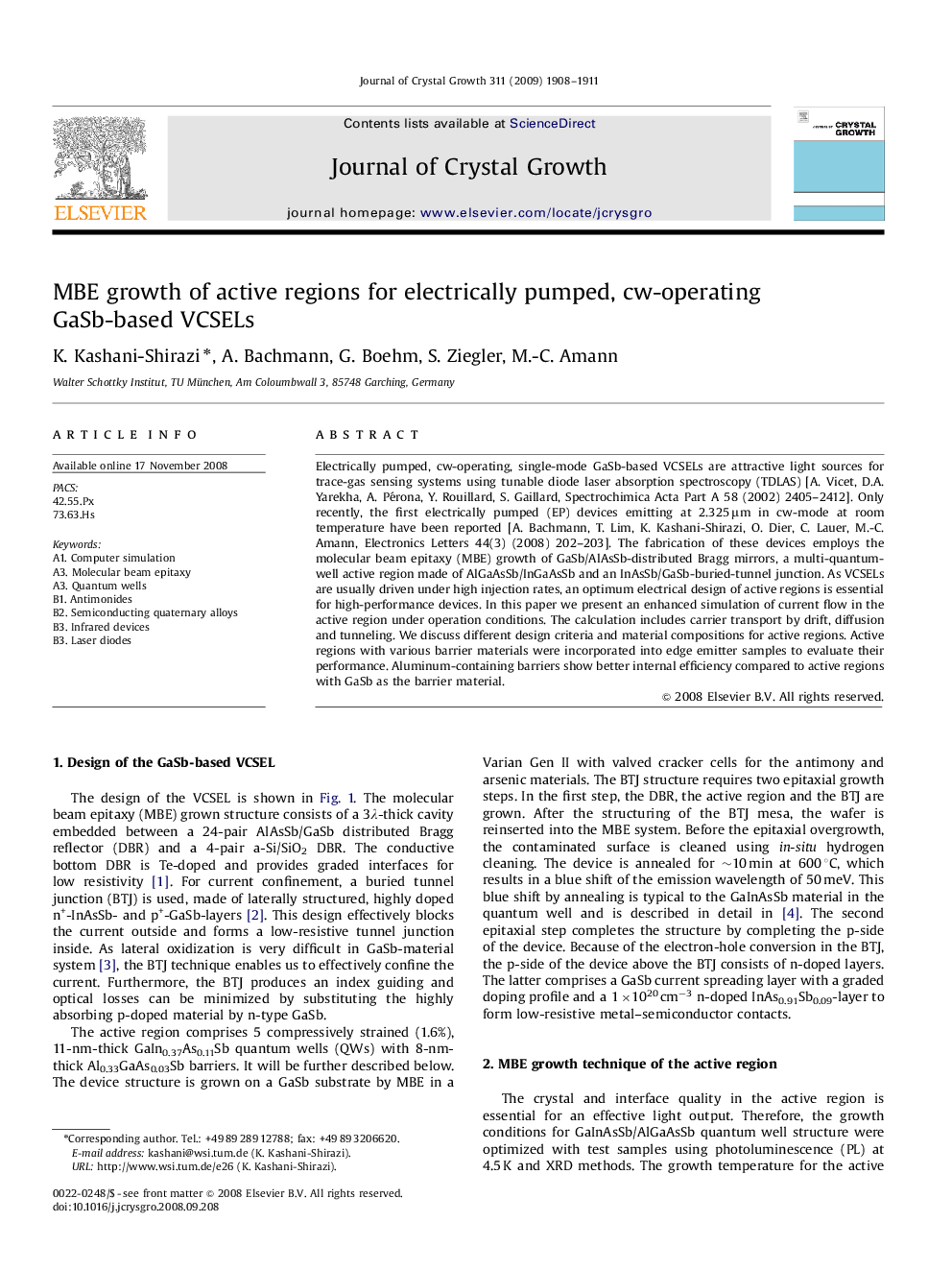| Article ID | Journal | Published Year | Pages | File Type |
|---|---|---|---|---|
| 1794254 | Journal of Crystal Growth | 2009 | 4 Pages |
Electrically pumped, cw-operating, single-mode GaSb-based VCSELs are attractive light sources for trace-gas sensing systems using tunable diode laser absorption spectroscopy (TDLAS) [A. Vicet, D.A. Yarekha, A. Pérona, Y. Rouillard, S. Gaillard, Spectrochimica Acta Part A 58 (2002) 2405–2412]. Only recently, the first electrically pumped (EP) devices emitting at 2.325 μm in cw-mode at room temperature have been reported [A. Bachmann, T. Lim, K. Kashani-Shirazi, O. Dier, C. Lauer, M.-C. Amann, Electronics Letters 44(3) (2008) 202–203]. The fabrication of these devices employs the molecular beam epitaxy (MBE) growth of GaSb/AlAsSb-distributed Bragg mirrors, a multi-quantum-well active region made of AlGaAsSb/InGaAsSb and an InAsSb/GaSb-buried-tunnel junction. As VCSELs are usually driven under high injection rates, an optimum electrical design of active regions is essential for high-performance devices. In this paper we present an enhanced simulation of current flow in the active region under operation conditions. The calculation includes carrier transport by drift, diffusion and tunneling. We discuss different design criteria and material compositions for active regions. Active regions with various barrier materials were incorporated into edge emitter samples to evaluate their performance. Aluminum-containing barriers show better internal efficiency compared to active regions with GaSb as the barrier material.
